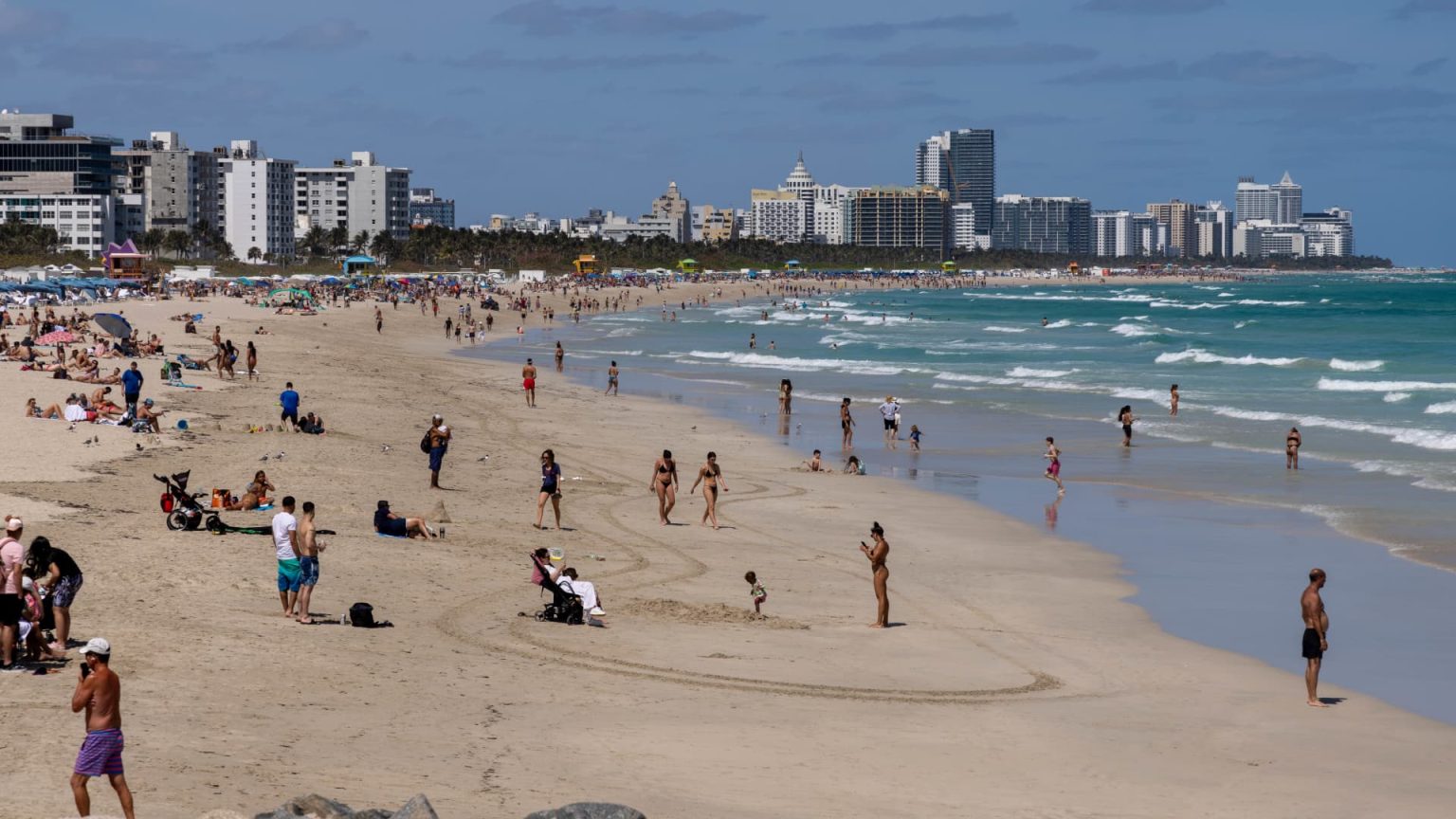Miami is facing the daunting reality of being ground zero for climate change. The city is at high risk of being submerged due to rising sea levels, yet its population and construction volume continue to increase. Climate risks are always on the minds of residents and business owners, but the allure of Miami’s weather and lifestyle keeps them from leaving. Despite the acknowledgement of climate change, the majority of Miami-Dade County residents have no plans to relocate, even as they face financial threats from property damage, higher insurance premiums, and more.
Miami’s average elevation is six feet, which matches the expected sea-level rise by the end of the century. The city is sinking due to its porous limestone foundation, which allows water to seep through easily. Flooding from sea-level rise, storm surge, and high tides is becoming more frequent, putting Miami residents at risk. The financial consequences of climate disasters are numerous, from property damage to lost earnings, yet many people remain committed to staying in the area despite the risks.
Miami’s rapid development is driven by a booming real estate market, attracting new residents from high-tax states seeking warm weather and job opportunities. The city’s skyline is growing at a breakneck pace, with new residential and mixed-use buildings being constructed regularly. Companies and billionaires are also relocating to Miami, boosting the local economy and creating more job opportunities. While climate risks are a concern, short-term interests often trump these concerns for many residents and developers.
Miami’s resilience efforts include strict building codes, infrastructure enhancements, and investments in climate resilience projects. The city actively plans for climate change and prepares for future challenges through various projects and initiatives. However, some experts question whether developers are capitalizing on the current real estate market with short-term investments, potentially leaving buyers at risk in the long run. Management of climate risks remains a crucial issue for the city’s future.
The financial impacts of climate change are already being felt in Miami, with residents experiencing flooding, saltwater intrusion, and increased insurance premiums. While wealthier individuals may be able to absorb financial losses from climate events, lower-income households bear a heavier burden. The destruction caused by hurricanes can lead to urban renewal, with more expensive buildings replacing older structures. However, the rich are also increasing their exposure to risk by cutting down mangroves, which provide natural protection against flooding and storm surge.
Despite the challenges posed by climate change, Miami officials are working to make the city more resilient through infrastructure improvements, urban redesign, and environmental restoration projects. Residents and businesses are encouraged to take steps to reduce their flood risk and adapt to the changing climate. While these efforts have shown some progress, concerns remain about the long-term livability of Miami as climate change intensifies. It may be crucial for the city to continue investing in resilience measures to ensure its survival in the face of climate risks.


